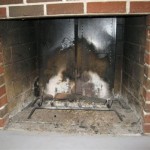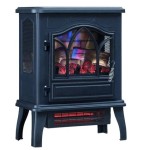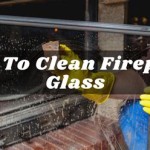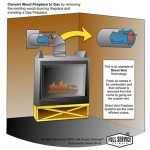Clean Inside Fireplace: A Comprehensive Guide
Keeping a fireplace clean is crucial for both its efficiency and safety. A buildup of soot, creosote, and other debris can lead to a hazardous fire hazard, reduced heating output, and diminished aesthetic appeal. Cleaning the inside of your fireplace is an important maintenance task that should be performed regularly. This comprehensive guide will delve into the essential steps for a clean and safe fireplace, addressing the key areas that require attention.
1. Gather the Necessary Tools and Supplies
Before embarking on your fireplace cleaning endeavor, ensure you have the appropriate tools and supplies on hand. These typically include:
- Fireplace brush and poker: These tools are essential for dislodging soot and debris from the firebox, flue, and chimney.
- Vacuum cleaner with a brush attachment: A vacuum cleaner effectively removes loose soot and dust from the surrounding areas.
- Dustpan and broom: These tools are helpful for sweeping up larger debris and ash.
- Protective eyewear: Wearing protective eyewear safeguards your eyes from flying debris and dust.
- Gloves: Gloves protect your hands from soot and ash.
- Drop cloth: A drop cloth protects your floor and surrounding furniture from debris and dust.
- Fireplace cleaning solution: A specialized fireplace cleaning solution can help break down stubborn soot and creosote.
Having these tools readily available simplifies the cleaning process and ensures a more efficient and safe cleaning experience.
2. Prepare the Fireplace for Cleaning
Before you begin cleaning, it is necessary to prepare the fireplace. This involves:
- Extinguish the fire completely: Ensure that all embers and ashes have been fully extinguished before commencing any cleaning activities. This step is crucial for preventing accidental fires and ensuring a safe environment.
- Allow the fireplace to cool down: The fireplace should be allowed to cool down completely before cleaning. This prevents burns and ensures that all ashes and embers have cooled down completely.
- Remove any remaining ashes: Carefully remove any remaining ashes and debris from the firebox using a dustpan and broom. Dispose of the ashes responsibly in a metal ash can or other suitable container.
- Protect the surrounding area: Cover the surrounding floor and furniture with a drop cloth to prevent them from becoming soiled by soot and dust.
These preparatory steps ensure that the fireplace is ready for safe and effective cleaning.
3. Clean the Firebox and Hearth
With the fireplace prepared, you can now begin cleaning the firebox and hearth:
- Remove the fireplace grate: Carefully remove the fireplace grate and set it aside. Clean the grate thoroughly with a brush or vacuum cleaner, ensuring that all soot and ash are removed.
- Clean the firebox walls: Use a fireplace brush to scrub the firebox walls, removing any soot, ash, or debris buildup. Start from the top and work your way down, using sweeping motions to dislodge the debris.
- Vacuum out the firebox: Once you have brushed the firebox, use a vacuum equipped with a brush attachment to remove any remaining dust and debris. Pay particular attention to the crevices and corners of the firebox.
- Clean the hearth: Sweep or vacuum the hearth, removing any fallen ash or debris. If you have a stone or brick hearth, consider using a damp cloth to wipe down the surface.
Thorough cleaning of these areas ensures a clean and safe fireplace environment.
4. Cleaning the Flue and Chimney
The flue and chimney are the most critical areas to clean, as they are prone to creosote buildup. A buildup of creosote is highly flammable and poses a significant fire risk. Here's how to clean these areas:
- Use a fireplace brush: Attach the fireplace brush to the poker and insert it into the flue opening. Slowly work the brush up and down the flue, dislodging any soot and creosote buildup. Repeat this process multiple times to ensure thorough cleaning.
- Use a chimney cleaning kit: If you have a chimney cleaning kit, follow the manufacturer's instructions for its proper use. These kits often include a specialized brush and weights to help navigate the chimney.
- Consider professional chimney cleaning: For those who are unfamiliar with chimney cleaning or have a complex or tall chimney, hiring a professional chimney sweep is recommended. Professional sweeps have the specialized equipment and expertise to thoroughly clean your chimney.
Regular cleaning of the flue and chimney is crucial for maintaining a safe and efficient fireplace.
5. Finish Cleaning and Maintenance
Once the cleaning process is complete, there are a few final steps to ensure that your fireplace is clean and well-maintained:
- Inspect for damage: Carefully inspect the firebox, flue, and chimney for any signs of damage, such as cracks or loose bricks. If you notice any damage, it is essential to contact a qualified professional for repairs.
- Dispose of debris properly: Collect all the soot, ash, and debris removed from the fireplace. Dispose of these materials responsibly in a metal ash can or designated waste receptacle.
- Clean the surrounding area: Thoroughly vacuum or sweep up any remaining dust or debris from the surrounding area. Clean any surfaces that may have come into contact with soot or ash.
- Regular maintenance: To prevent a buildup of soot and creosote, it is crucial to clean your fireplace regularly. The frequency of cleaning depends on usage, but generally, a yearly cleaning is recommended.
These final steps ensure that your fireplace is clean, safe, and ready for use.

How To Clean A Fireplace Diy Basics

Cleaning Inside A White Fireplace Domestically Blissful

How To Clean Inside A White Fireplace Domestically Blissful

How To Clean Fireplace Bricks 9 Steps With S Wikihow

How To Clean A Fireplace The Home Depot

Cleaning Inside A White Fireplace Domestically Blissful

How To Clean A Fireplace The Home Depot

Cleaning The Inside Of Gas Fireplace Glass Thrifty Decor Diy And Organizing

How To Clean A Fireplace

How To Clean Brick Fireplaces Mantels Hearths And More My Space
Related Posts








